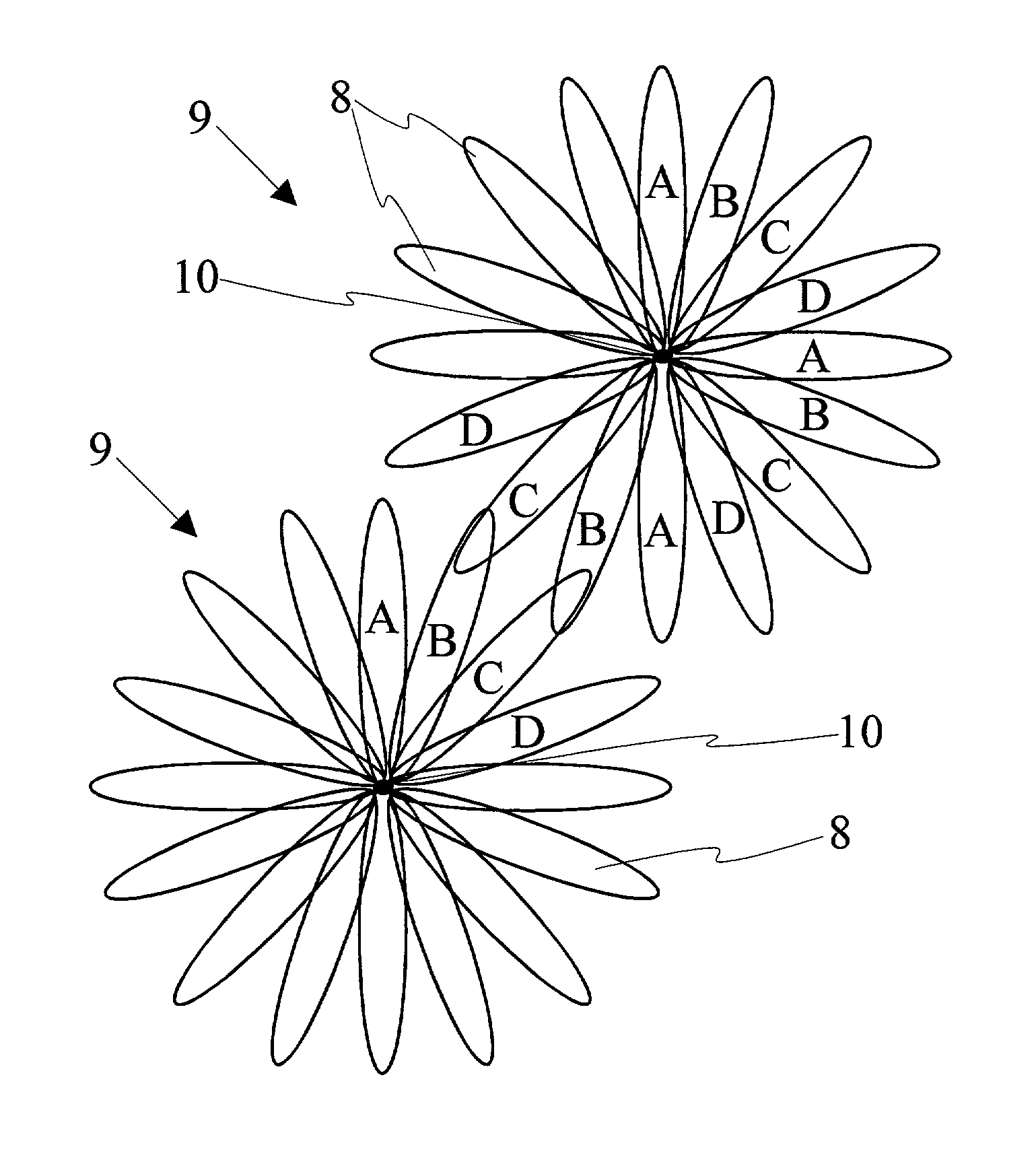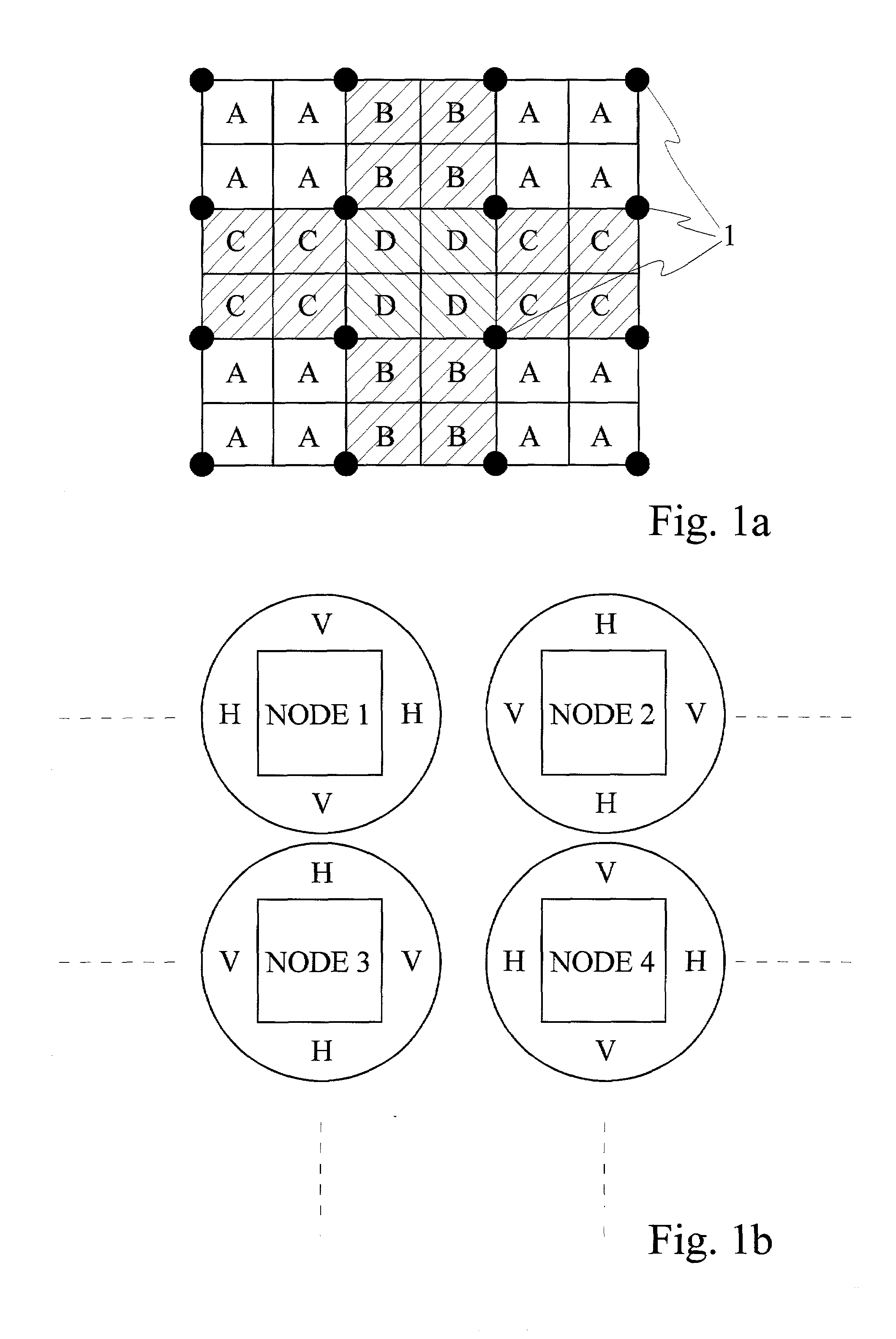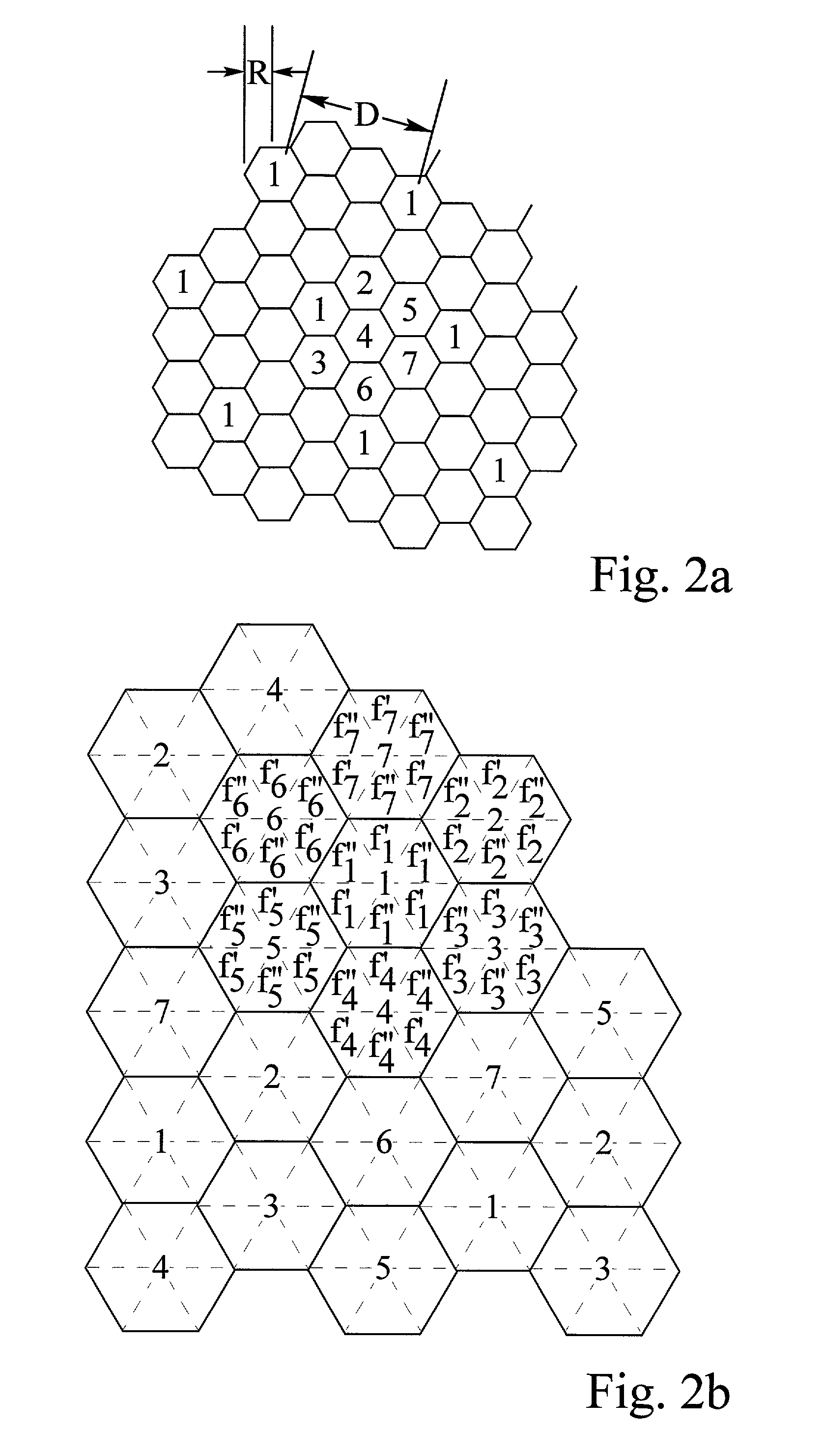Method and wireless communication hub for data communications
a data communication and wireless communication technology, applied in the field of wireless broadband communications, can solve the problems of preventing clients from generating and distributing substantial amounts of information into the network, the most expensive aspect of any broadband communication network is the cost of running cable from a service provider to each client, and the cost of installing fibre optic cables is estimated to cost tens of thousands of dollars per mile of installed cables. , the effect of reducing the attenuation of rain and other obstacles
- Summary
- Abstract
- Description
- Claims
- Application Information
AI Technical Summary
Benefits of technology
Problems solved by technology
Method used
Image
Examples
examples
[0139]The Unlicensed National Information Infrastructure Frequency Allocations from 5.15 GHz to 5.825 GHz were used in a series of experiments conducted in an urban residential and commercial environment characterized by high foliage and roof top / building presence in the signal path. Tests were conducted with rosette petals having 11.25 degrees beamwidths in azimuth and elevation. Furthermore, simulation studies were conducted to examine the behaviour of constellations of rosettes over a contiguous coverage area. The simulations, where possible, used data taken from the experiments.
[0140]In both the experiments and simulation studies, frequencies were reused every 45 degrees thus requiring four different frequency ranges each reused 8 times. A parabolic Tx / Rx low sidelobe antenna having −30 dB sidelobes and a gain of 25 dBiC was used at the hub with subscriber antennas having similar characteristics. 200 MHz of spectrum was assigned to the system for the transmit (forward link) dire...
PUM
 Login to View More
Login to View More Abstract
Description
Claims
Application Information
 Login to View More
Login to View More - R&D
- Intellectual Property
- Life Sciences
- Materials
- Tech Scout
- Unparalleled Data Quality
- Higher Quality Content
- 60% Fewer Hallucinations
Browse by: Latest US Patents, China's latest patents, Technical Efficacy Thesaurus, Application Domain, Technology Topic, Popular Technical Reports.
© 2025 PatSnap. All rights reserved.Legal|Privacy policy|Modern Slavery Act Transparency Statement|Sitemap|About US| Contact US: help@patsnap.com



